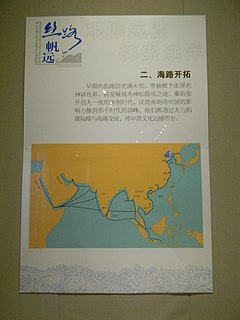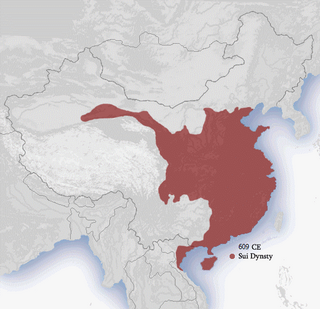 W
WThe history of Asia can be seen as the collective history of several distinct peripheral coastal regions such as East Asia, South Asia, Southeast Asia and the Middle East linked by the interior mass of the Eurasian steppe. See History of the Middle East and Outline of South Asian history for further details.
 W
WThe earliest known written records of the history of China date from as early as 1250 BC, from the Shang dynasty, during the king Wu Ding's reign, who was mentioned as the twenty-first Shang king by the same. Ancient historical texts such as the Book of Documents, the Records of the Grand Historian and the Bamboo Annals mention and describe a Xia dynasty before the Shang, but no writing is known from the period, and Shang writings do not indicate the existence of the Xia. The Shang ruled in the Yellow River valley, which is commonly held to be the cradle of Chinese civilization. However, Neolithic civilizations originated at various cultural centers along both the Yellow River and Yangtze River. These Yellow River and Yangtze civilizations arose millennia before the Shang. With thousands of years of continuous history, China is one of the world's oldest civilizations, and is regarded as one of the cradles of civilization.
 W
WThe Five Dynasties and Ten Kingdoms period (907–979) was an era of political upheaval and division in 10th-century Imperial China. Five states quickly succeeded one another in the Central Plain, and more than a dozen concurrent states were established elsewhere, mainly in South China. It was the last prolonged period of multiple political divisions in Chinese imperial history.
 W
WThe first human habitation in the Japanese archipelago has been traced to prehistoric times around 30,000 BC. The Jomon period, named after its cord-marked pottery, was followed by the Yayoi people in the first millennium BC when new inventions were introduced from Asia. During this period, the first known written reference to Japan was recorded in the Chinese Book of Han in the first century AD.
 W
WGoryeo was a Korean kingdom founded in 918, during a time of national division called the Later Three Kingdoms period, that unified and ruled the Korean Peninsula until 1392. Goryeo achieved what has been called a "true national unification" by Korean historians as it not only unified the Later Three Kingdoms but also incorporated much of the ruling class of the northern kingdom of Balhae, who had origins in Goguryeo of the earlier Three Kingdoms of Korea. The name "Korea" is derived from the name of Goryeo, also spelled Koryŏ, which was first used in the early 5th century by Goguryeo.
 W
WThe Liao dynasty, also known as the Liao Empire, officially the Great Liao, or the Khitan (Qidan) State, was an empire and imperial dynasty in East Asia that ruled from 916 to 1125 over present-day Northern and Northeast China, Mongolia and portions of the Russian Far East and North Korea. The empire was founded by Yelü Abaoji, Khagan of the Khitans around the time of the collapse of the Tang dynasty, and was the first state to control all of Manchuria. Being ruled by the Khitan Yelü clan, the Liao dynasty is considered by historians to be a conquest dynasty of China.
 W
WThe Lý dynasty,Vietnamese: Nhà Lý, Vietnamese pronunciation: [ɲâː lǐ], chữ Nôm: 茹李, chữ Hán: 李朝, Hán Việt: Lý triều}} also known as the House of Lý, was a Vietnamese royal family that ruled the kingdom of Đại Việt from 1009 when Lý Công Uẩn overthrew the Early Lê dynasty and ended in 1225, when the queen Lý Chiêu Hoàng was forced to abdicate the throne in favor of her husband, Trần Cảnh. During emperor Lý Thánh Tông's reign, the official name of Vietnam became Đại Việt.
 W
WThe Malacca Sultanate was a Malay sultanate centred in the modern-day state of Malacca, Malaysia. Conventional historical thesis marks c. 1400 as the founding year of the sultanate by a Malay Raja of Singapura, Parameswara, also known as Iskandar Shah. At the height of the sultanate's power in the 15th century, its capital grew into one of the most important entrepôts of its time, with territory covering much of the Malay Peninsula, the Riau Islands and a significant portion of the northern coast of Sumatra in present-day Indonesia.
 W
WThe Maritime Silk Road or Maritime Silk Route refers to the maritime section of the historic Silk Road that connected China, Southeast Asia, the Indian subcontinent, Arabian peninsula, Somalia, Egypt and Europe. It flourished between the 2nd century BC and 15th century AD. Despite its association with China in recent centuries, the Maritime Silk Road was primarily established and operated by Austronesian sailors in Southeast Asia, Tamil merchants in India and Southeast Asia, Greco-Roman merchants in East Africa, India, Ceylon and Indochina, and by Persian and Arab traders in the Arabian Sea and beyond.
 W
WThe military history of the Northern and Southern dynasties encompasses the period of Chinese military activity from 420 to 589. Officially starting with Liu Yu's usurpation of the Jin throne and creation of his Liu Song dynasty in 420, it ended in 589 with the Sui dynasty's conquest of Chen dynasty and reunification of China. The first of the Northern dynasties did not however begin in 420, but in 386 with the creation of Northern Wei. Thus there is some unofficial overlap with the era of the Sixteen Kingdoms.
 W
WThe Northern and Southern dynasties was a period in the history of China that lasted from 420 to 589, following the tumultuous era of the Sixteen Kingdoms and the Wu Hu states. It is sometimes considered as the latter part of a longer period known as the Six Dynasties. Though an age of civil war and political chaos, it was also a time of flourishing arts and culture, advancement in technology, and the spread of Mahayana Buddhism and Daoism. The period saw large-scale migration of Han Chinese to the lands south of the Yangtze. The period came to an end with the unification of all of China proper by Emperor Wen of the Sui dynasty.
 W
WThe Radhanites were medieval merchants, some of Jewish origin. Only a limited number of primary sources use the term, and it remains unclear whether they referred to a specific guild, or to a clan, or generically to Jewish merchants in the trans-Eurasian trade network. Jewish merchants operated in trade between the Christian and Islamic worlds during the early Middle Ages. Many trade routes previously established under the Roman Empire continued to function during that period – largely through their efforts. Their trade network covered much of Europe, North Africa, the Middle East, Central Asia and parts of India and China.
 W
WThe Silk Road was a network of trade routes which connected the East and West, and was central to the economic, cultural, political, and religious interactions between these regions from the 2nd century BCE to the 18th century. The Silk Road primarily refers to the land routes connecting East Asia and Southeast Asia with South Asia, Persia, the Arabian Peninsula, East Africa and Southern Europe.
 W
WThe Song dynasty was an imperial dynasty of China that began in 960 and lasted until 1279. The dynasty was founded by Emperor Taizu of Song following his usurpation of the throne of the Later Zhou, ending the Five Dynasties and Ten Kingdoms period. The Song often came into conflict with the contemporaneous Liao, Western Xia and Jin dynasties to its north. It was eventually conquered by the Mongol-led Yuan dynasty.
 W
WThe Sui dynasty was a short-lived imperial dynasty of China of pivotal significance. The Sui unified the Northern and Southern dynasties and reinstalled the rule of ethnic Han in the entirety of China proper, along with sinicization of former nomadic ethnic minorities within its territory. It was succeeded by the Tang dynasty, which largely inherited its foundation.
 W
WTemplate:Infobox forme
 W
WThis is a timeline of the Yuan dynasty (1271–1368).
 W
WThe Yuan dynasty, officially the Great Yuan, was a successor state to the Mongol Empire after its division and a ruling dynasty of China established by Kublai Khan, leader of the Mongol Borjigin clan, lasting from 1271 to 1368. In Chinese historiography, this dynasty followed the Song dynasty and preceded the Ming dynasty.